
18 minute read
FEATURE
from Feb. 20, 2020
Getting Getting Getting technical technical technical
Welcome to the Reno News & Review’s Winter Family Guide
Advertisement
When my dad set my brother, mom and me up with our first email accounts nearly 15 years ago, we all thought of it as just a formality—something we could use to message relatives, mostly. In the year’s since, every Christmas comes with a new account to set up, device to activate, or app to download. I often message relatives on my Facebook account now—at the request of my parents who, mercifully, still don’t have accounts of their own. My mom navigates her bank accounts and shopping orders from her iPhone. And my dad, who once said he would never send a text message, now messages me to catch up or tell me when to expect dinner.
If your family is anything like mine, technology has changed even the basic ways you communicate, relate to each other and manage your home—and the developments keep coming. In this guide, there are a few different stories about how changing technology affects our lives, health and, potentially, wallets.
A lot of ink has been spilled about our declining face-to-face conversation time in modern society, but for patients who can’t easily get to their doctors, screens might save lives. On page 12, Andrea Heerdt took a look at Renown’s new telemedicine program, which aims to bring doctors into patients’ homes via a remote diagnostic tool and, yes, a big ol’ screen.
Even as I’m typing this, I’m getting notifications from Instagram and Facebook, and I gotta say, it’s distracting. More and more research about the negative effects of social media use is starting to come out, and for RN&R’s teenage contributor, it’s compelling stuff. Read Oliver Guinan’s piece about why he quit social media on page 14.
Finally, parenting in the digital age can be a challenge—especially when there are a million products on the market all promising to make yours and your kids’ lives easier. On page 17, resident dad Mark Earnest sifts through some of digital dreck and puts together a worthy wish list of parenting tech.
It’s a brave new world out there, and while the nature of technology means we’ll probably be adjusting to something new immediately after this guide is published, consider this your update. Thanks for reading.
Best regards, Matt Bieker Special Projects Editor
family Guide family guide continued on page 12





House call House call House call
Patients look suspiciously happy in this renown courtesy photo.
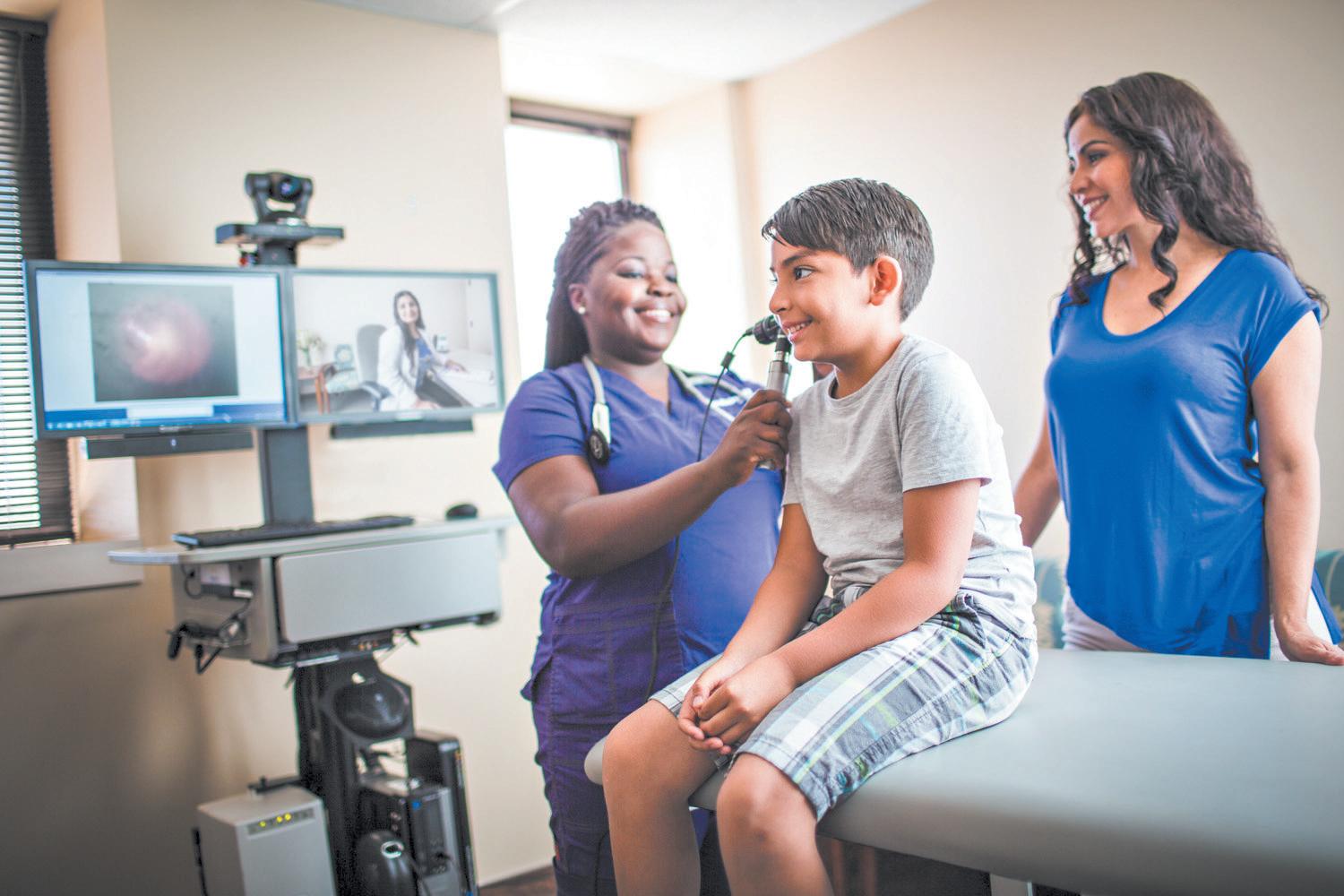
Courtesy/ r enown Healt H
Telemedicine could bring your doctor to you
by AndreA Heerdt
Nevada ranks as the seventhlargest state in terms of land size. With many rural communities around Reno seeking access to specialty physicians, it can be challenging for doctors to regularly visit small towns like Elko, Tonopah, Winnemucca and Fallon to provide patients with the medical care they need.
As technology continues to change, many health care companies like Renown Health have incorporated telemedicine offered to better meet the needs of those in rural areas who otherwise would have challenges seeing a doctor for certain conditions due to their geographic location.
According to Mitchell Fong, Director of TeleHealth at Renown, telemedicine comes in multiple forms, depending on the patient’s location and medical needs. When Renown launched its TeleHealth program in 2012, it was designed as a small pilot project to provide rural populations with access to remote specialty care using advanced technology such as Bluetooth stethoscopes, high-definition peripheral cameras and enhanced broadband connectivity.
In the past, specialty physicians would have to make trips out to small towns throughout the state maybe once or twice a month to provide care, or patients would struggle to find transportation or the means to travel hours into a city to see a doctor at a large hospital, according to Fong.
“Patients tell us that they wouldn’t even get care for some of these specialties if they had to drive all the way in [to Reno],” Fong said. “Ultimately, I hope that we’re improving the lives of these patients by allowing them to live their best life and not waiting until they have a severe episode.”
Many general practitioners working in rural areas also experience isolation and burnout being the only doctor in town, which leads to high physician turnover and doctor shortages across remote areas. Now that rural doctors have the opportunity to interact and engage with specialty physicians and other health care providers via telemedicine, it has provided a greater sense of community and lower levels of isolation and burnout in rural doctors, according to Fong.
In 2019, Renown’s TeleHealth program logged over 5,500 telemedicine visits. Fong said the focus is now on how telemedicine can create an impact for those still underserved in urban communities, too.
Urban expansion
One of the biggest challenges companies like Renown face when it comes to expanding telemedicine into the urban setting are the rules and regulations of reimbursing the cost of services. According to Fong, specific services were only approved to be reimbursed if they were done in rural locations.
Programs like Medicare are eliminating these limitations, which will allow patients in urban settings to use telemedicine services as well.
Fong said when it comes to services Renown will offer to urban patients, it will be a direct-to-consumer method of care such as video chatting with a doctor on a smartphone. Of course, there are limitations. Patients don’t have the proper equipment such as high-definition cameras or stethoscopes at home, but there are many specific uses the direct-to-consumer method is good for.
“It’s really thought of as a lower acuity urgent care setting,” said Fong. “Some of the most common conditions that we treat in that virtual setting are sinusitis, respiratory infection, urinary tract infection and flu symptoms.”
Minor skin lesions can also be examined over video chat, but Fong said those are the top four most common virtual visits the direct-toconsumer method should be used for.
Still, patients might be unsure if their maladies are fit for a virtual visit or a trip to the hospital. Fong said TeleHealth’s online platform prompts patients to answer a series of triage questions about the length and severity of their condition before directing them to make a decision on where to go.
“Some triage questions have a built-in algorithm, so as you’re answering these questions based on your condition, your severity your exposure, it can actually stop the questions and say, ‘Your condition sounds like you should be going to the urgent care,’ or ‘Your condition sounds like you should be going to emergency care,’” Fong said. “That way, instead of going through the entire questionnaire, getting your virtual visit and then being redirected, it’s redirecting you upstream.”
Medical Misconceptions
According to Fong, a common misconception about telemedicine is that it’s difficult for patients to develop a relationship with their health care provider. Fong said many patients have stated in recent surveys that they prefer communication with their doctor through telemedicine over a traditional face-to-face visit. Patients expressed their in-person experiences wherein their doctor spent much of their time sitting behind a computer documenting information. Those who’ve used telemedicine experienced more interaction from their doctor despite the conversation taking place over video.
Another common misconception is that the level of care in telemedicine isn’t as high as it would be in a regular doctor’s office. Although the direct-to-consumer method of video chat has its limitations, in-clinic visits come equipped with HIPAA compliant technology such as advanced cameras and stethoscopes that allow doctors to examine the eyes, nose, ears and throat as well as listen to the patient’s heart and lungs as if they were in the exam room with them. “At the end of the day we ask our providers to ensure that the service we’re delivering is at least the same level of quality as they would be delivering face-to-face, and that is the expectation that we hold across our TeleHealth program,” said Fong. When Fong joined Renown’s TeleHealth department in 2012, Nevada was ranked as the 47th worst state for access to health care providers. According to Fong, the future of telemedicine in the state is leveraging these innovative technologies in a more efficient fashion in order to better serve both rural and urban populations. Ω

“Ultimately, I hope that we’re improving the lives of these patients by allowing them to live their best life and not waiting until they have a severe episode.” they were in the exam room
Dr. Mitchell Fong, director of TeleHealth family guide family guide continued on page 14
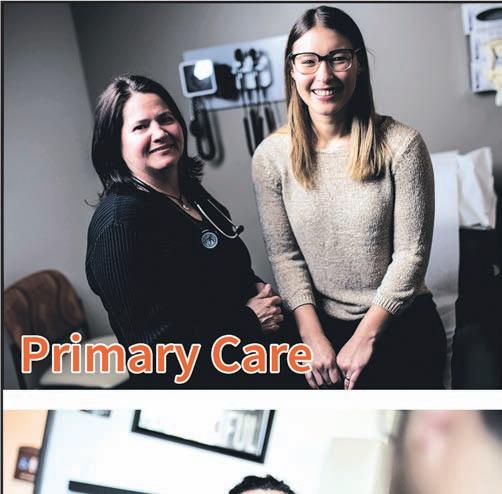
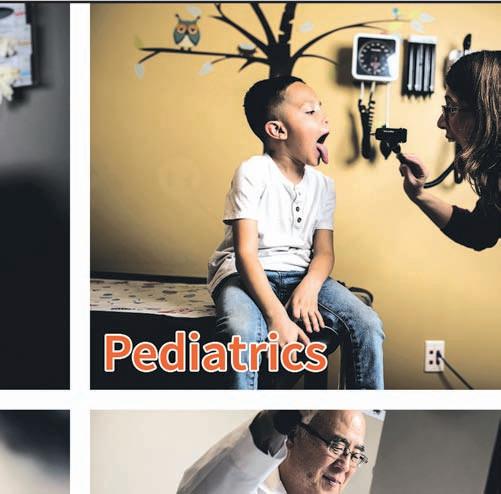
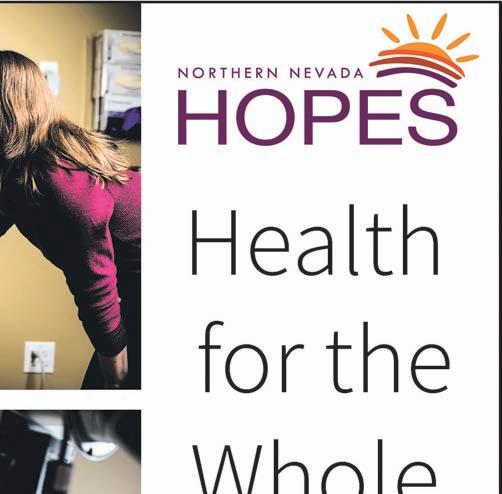


by Oliver Guinan
Off line
A Reno teen talks about why he quit social media
The other morning, like many, I sat at my kitchen counter perusing Twitter over coffee and cereal. My brother, Evan, sat next to me. He was on his phone, too, although his Frosted Flakes were somewhat soggier than mine and had begun sinking to the bottom of his bowl.
“You might want to start eating that before it gets too mushy,” I reminded him, my own cereal getting soggier.
Evan was busy orchestrating a raid on Clash of Clans, a popular smartphone game where you score trophies by destroying other players’ bases with armies of mythical creatures.
He exhaled tersely through his nose without looking up: “Hmph”
Neither of us attempted any more conversation that morning, and we didn’t finish our cereal. I turned back to the Tweets populating my phone screen, and the kitchen was silent.
Reflecting on that morning frustrated me. Why were my brother and I hungrier for our phones than for breakfast? Or, more irksome, why were we more interested in Twitter and Clash of Clans than in each other? I decided to pay closer attention to the time I spent on social media over the next couple of days.
In class, I noticed that I frequently left Instagram face-up on my desk, alternating back and forth between notetaking and scrolling. At home, even after finally putting my phone away to work, I pulled it back out after finishing small tasks—I felt like a circus monkey doing backflips for peanuts. Fifteen minutes on Twitter had become a personal treat for work well done. I noticed other things, too. Even when I grabbed my phone to do something productive, like use the calculator, I was distracted easily. Instead of Googling the word I didn’t know, I found myself tapping through Snapchat stories. Rather than sending an email, I scrolled through Instagram memes. Most times, I forgot why I had gotten on my phone in the first place.
My iPhone’s Screen Time feature tells me that I use my phone for about 3 hours and 20 minutes every day. At first, this felt like good news. Although there is relatively little research tracking Americans’ phone use, the Washington Post reported in 2015 that teens spend an average of 9 hours a day on their phones, mostly consuming social media. I was also reassured because, just a few days earlier, I overheard

a friend in class talking about their own phone use: “No way, I spent 12 hours on TikTok last Sunday?”
Ticking away
My mood changed pretty quickly, though, after adding up all that time. At this rate, I will spend more than 45 days a year on my device. If I live to be 80 years old, I’ll have spent 8 years, or a tenth of my life, staring at my iPhone. My classmate who spent 12 hours on TikTok? Barring a change in habits, social media will consume 34 years of her life.
Social media giants like Facebook and Google tell us that their platforms make us better connected, but that is no longer the point, if it ever was. It’s true that a Snapchat of my sandwich can traverse the Atlantic Ocean faster than I can take a bite of it, but does that make me and the friend whose phone it lights up any closer? If it does, is it worth the astonishing amount of personal information and control over our lives that we give to gatekeepers like Facebook’s Mark Zuckerberg and Google’s Larry Page? When our digital presence bookends our days, we hand over the freedom to write our own stories to vacuous influencers and seedy algorithms, if it’s possible to differentiate between the two.
Resisting social media’s pull is a challenge that will fall into my generation’s lap. According to the Pew Research Center, 95 percent of teenagers in the United States have access to a smartphone. Of those, 75 percent maintain at least one social media account by the time they are 17. But ubiquitous access has not made my friends and me any happier
“Social media use deepens existing anxieties,” Rebekah Mileo, an English and Psychology teacher at Reno High School explained to me. “It intensifies a fear of missing out, and it creates a sense of ‘this is what other people are doing—my life is not good enough.’ Using social media, you are one layer removed from your experiences.”
Creating a noteworthy online presence— amassing hundreds of likes on our Instagram selfies or thousands of retweets on Twitter—is a generational goal. To us, unlike our parents, interminable connectedness is the norm. More specifically, there is not, nor is there likely to be, a time in my life that is not accessible online. Unnerving, right?

Brain drain
I asked several of my classmates about their phone habits and found that, even though the long-term effects of social media on our brains are not yet known, it certainly isn’t helping teenagers feel level-headed and confident.
“I spend a lot of time scrolling,” said Isaac Sorensen, a senior at Reno High. “I always feel drained and like I wasted my time after going on social media. The way I use my phone definitely has a negative impact on my life.”
It’s difficult to prevent our smartphones and social media from zapping our sanity. But before we can learn to treat our cellphones as tools instead of opiates, we have to make sure we’re all on the same page. There is little authentic discussion of healthy phone habits in school. For most of my friends, as long as their cellphone use isn’t getting in the way of more important things, like grades, everything is fine at home.
For parents and kids alike, though, the line between important and unimportant becomes increasingly difficult to draw when you’re dealing with a phenomena that “mirrors addiction,” as the University of Nevada, Reno, School of Medicine noted last year.
“There’s a disconnect,” Junior Sophia Nebesky told me. “We’re the first generation to be submerged in social media. Older generations can’t really relate to it, so they don’t really understand the types of mental health issues that come with it.” A week ago, I quit social media. The first few days were difficult and full of nervous energy. I checked my phone constantly and had trouble focusing at school, as if the notifications had migrated off my lock-screen and into my head. Today, though, I haven’t checked my phone in five hours. In fact, I’m not totally sure where it is—and I’m OK with that. Ω
“If I live to be 80 years old, I’ll have spent 8 years, or a tenth of my life, staring at my iPhone.” trouble focusing at school, as if the notifications had migrated off my lock-screen and into my Oliver Guinan is a junior at Reno High School. family guide family guide
continued on page 17




family guide family guide
continued from page 15 Cutting edge Cutting edge Cutting edge
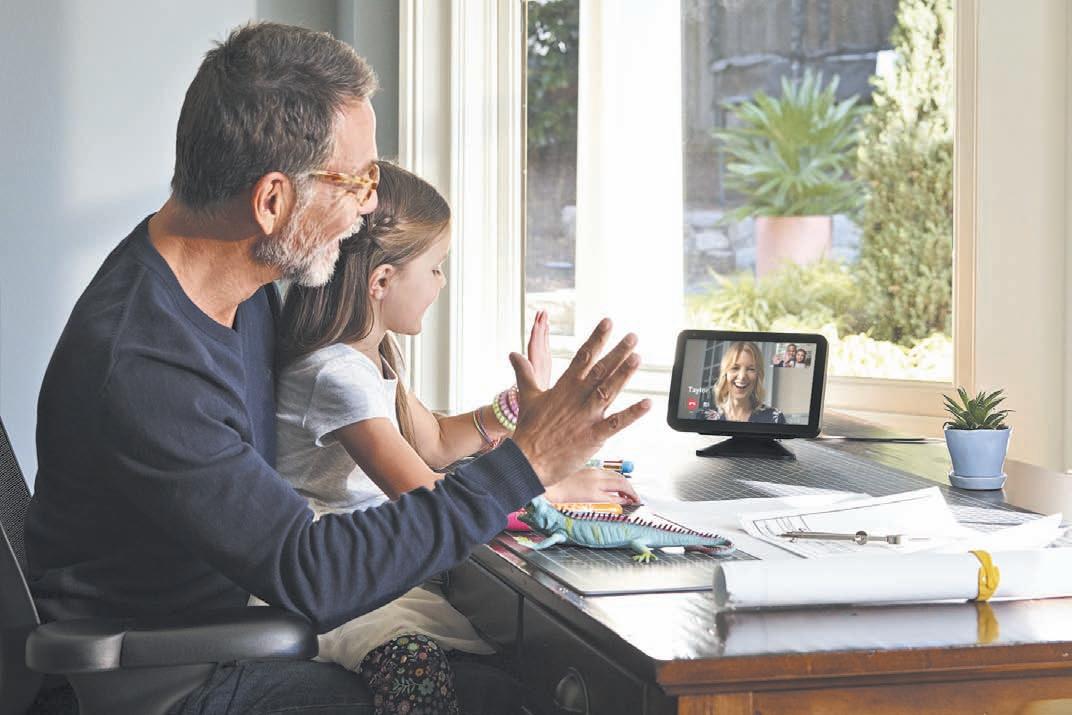
by Mark EarnEst
Eight pieces of tech to make parenting easier
There are plenty of gadgets aimed squarely at the pocketbooks of parents. While some are just cool pieces of tech to make people think you are into the hippest things every other mom and dad is into, others have a genuine purpose and can make your lives easier by helping around the house, looking after little ones or just making the little things easier. Here’s a look at eight pieces of parenting tech that meet those demands, with tips on pricing.

security camera doorbells
One of the hottest home-tech trends of the past few years has been a doorbell with a security boost beyond just the tone that warns you about a visitor. Instead, the smart doorbell includes a camera at the top which shows who is at the door. You can watch them from a special unit that comes with the device, or you can view a live stream of your front porch from your smartphone. Some of these hi-tech doorbells also feature devices where you can speak to whomever is at the door. The Ring company has several available, and the price range is pretty wide, from $100 to $500. Find out more at ring.com.
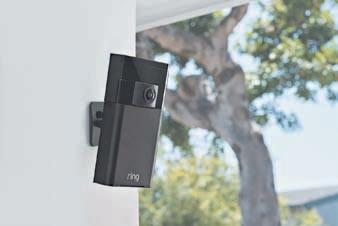
HigH-tecH strollers for baby
If you search around the internet for sophisticated strollers, you might get some sticker shock. The range looks to be anywhere from $1,000 to an eye-popping $5,000. One exception is from a company called Mockingbird, which has several features that go beyond the standard, but in a compact package that costs just $350. It has wheels that mirror the style of car tires, a canopy with what is, in essence, a sunroof, and a modular system that can switch from forward to parent-facing mode quickly. Find out more at hellomockingbird.com.
smart mugs for Hot drinks
This is a simple one that is actually pretty ingenious. If you pour the morning coffee or tea and then have to leave it on the counter to take care of a kid need, errand or work from home, you might return to a cold beverage. With the Ember smart mug and coaster, you get a synced app that heats the mug in the coaster to the temperature you best like your drink, just program that proper heat with the app itself. It retails online at about $100. Find out more at ember.com.
track your kid on gPs
Don’t think of it as spying— think of it as security. There’s a small tracker available that can clip onto a backpack or piece of clothing, available from Jiobit, that syncs with an app so you can see the location of your kid in real time. You can also program alerts and specific location destinations. It’s available from Jiobit and is priced at about $100. Find out more at jiobit.com.
Put Home safety first
A standard-issue part of any family’s home is the smoke alarm, but there are some great hightech options that go beyond the batteries and the beeps. A company called Nest has one that also detects carbon monoxide, and they go a step further by making it wifi compatible, so it can warn you if there’s an alarm while you aren’t at home. It retails for about $120, and you can read more about it at nest.com.
cooking by remote
If you are a busy parent that needs to put the food on the table for the family, it’s become the thing to do to get a crock pot and cook dinner while at work. A high-tech version of this concept is the Instant Pot, which goes beyond just slow cooking to also be used for pressure cooking, a rice maker, or for steaming, and it’s fully programmable. Prices range from $90 to $150. Get more details at instantpot.com.
an easy temPerature cHeck
When you suspect that the kids are sick—or maybe even mom and dad aren’t feeling quite right— you need a thermometer that’s easy to use. There are many that fit that bill, but one of the most interesting is from the company iProven. It works both in the ear and on the forehead and has a compact style and easy readout. Plus, it’s priced at about $30. Find out more at iproven.com.
stay in toucH, literally
Another trendy gift in past years has been the Amazon Echo Show. With its latest iteration—the Amazon Echo Show 5—it still lets you stay in touch with family from far away with its video call capabilities. That’s not all it does, of course: there are also ways to control home devices, listen to music or answer questions you’re too lazy to look up on your phone. It retails for about $65. Find out more about it at amazon.com. Ω










